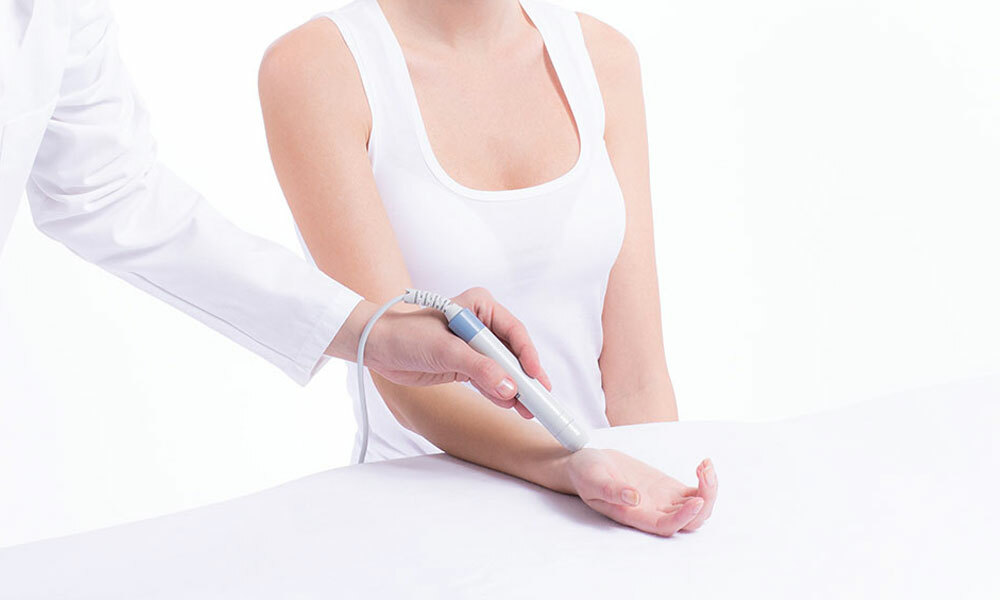From wound care to pain management, laser therapy harnesses the power of light to heal the body. This innovative treatment method is gaining popularity for many medical applications. Laser therapy involves using concentrated beams of light to generate therapeutic effects in tissue and cells. Lasers deliver photons into damaged areas to improve blood flow, reduce inflammation, ease pain, and accelerate healing. It provides targeted biological stimulation without medications or invasive procedures. During treatment, laser energy is absorbed by cellular photoreceptors and converted to biochemical energy. It energizes and alters cell function in various helpful ways according to its settings. Lasers stimulate or inhibit cell activity. Daily or weekly treatments often provide optimal benefits.
Understanding the science
Laser therapy harnesses specific wavelengths of light. When these light particles (photons) are emitted and absorbed by cells, they initiate positive physiological changes.
- Increased blood flow – Laser irradiation prompts vasodilation to boost blood flow to treated areas. Better circulation delivers more oxygen and nutrients for healing.
- Reduced inflammation – Lasers help modulate inflammation, reducing swelling and discomfort.
- Pain relief – By blocking pain signals and stimulating endorphin release, lasers provide analgesic effects.
- Accelerated healing – Photobiomodulation enhances cell energy production and function for faster healing.
- Improved immunity – Certain laser wavelengths stimulate immune cell activity to aid tissue repair.
- Nerve regeneration – Studies show lasers help regenerate and repair damaged nerve tissue more quickly.
These photobiological effects make laser therapy a versatile treatment for an array of medical problems.
Common uses of laser therapy
Some frequent uses and applications of laser therapy include:
- Wound healing – Diabetic ulcers, burns, scars. Promotes granulation and new tissue growth.
- Pain management – Arthritis, joint pain, back/neck pain, sprains, neuropathy. Eases inflammation and discomfort.
- Sports injuries – Sprains, strains, tendonitis, contusions. Accelerates recovery and function.
- Dental – Gum disease, oral ulcers, post-surgical healing. Reduces pain and fast-tracks recovery.
- Dermatology – Psoriasis, eczema, acne. Reduces inflammation and itching.
- Nerve repair – Carpal tunnel syndrome, peripheral neuropathy. Stimulates nerve regeneration.
- Hair growth – Androgenetic alopecia (pattern baldness), improving thickness.
Patients report significant pain relief, improved mobility, faster recovery from injuries, and enhanced quality of life from laser therapy. It continues to gain prominence at many pain clinics, physical therapy offices, and medical facilities.
Laser devices and treatment process
Laser therapy devices contain diode lasers that emit light through glass fibers into targeted treatment zones. Many different device types and designs exist. Handheld lasers direct light using probes applied to the skin surface. Large stationary units allow the treatment of multiple sites at once. During a typical treatment session, a clinician will guide the laser probe over the affected area, delivering therapeutic wavelengths that penetrate tissue without damaging it. Most treatments last 15-30 minutes depending on size and location. You simply relax while the light therapy takes effect.
The process is non-invasive and painless. Your eyes will be protected from direct laser exposure. Since photobiomodulation affects cellular function without heat or damage, there are no side effects and the treatment is very safe. Home laser therapy devices are also available for personal use between clinic visits. These help continue beneficial light treatments. Your clinician recommends suitable at-home options.

 Nutrition and Healing in Sarcoma Recovery: Dental Health, Treatment Plans, and Whole-Body Care
Nutrition and Healing in Sarcoma Recovery: Dental Health, Treatment Plans, and Whole-Body Care  Inside the HRT Clinic: How Hormones Influence Weight, Stress, and Cardiovascular Health
Inside the HRT Clinic: How Hormones Influence Weight, Stress, and Cardiovascular Health  Eye Bag Removal: Your Guide to Looking Fresh Every Day
Eye Bag Removal: Your Guide to Looking Fresh Every Day  Transitioning from Maternity to Workplace Wellness
Transitioning from Maternity to Workplace Wellness  Aging Gracefully: How Hearing Care and Home Support Improve Daily Living
Aging Gracefully: How Hearing Care and Home Support Improve Daily Living  The Role of Routine and Structure in Child Development
The Role of Routine and Structure in Child Development  Restoring Confidence Through Advanced Facial Procedures
Restoring Confidence Through Advanced Facial Procedures  Autism Therapy Programs Supporting Communication and Social Developments
Autism Therapy Programs Supporting Communication and Social Developments  From Burnout To Balance: How Weight, Motherhood, And Heart Health Intersect
From Burnout To Balance: How Weight, Motherhood, And Heart Health Intersect 